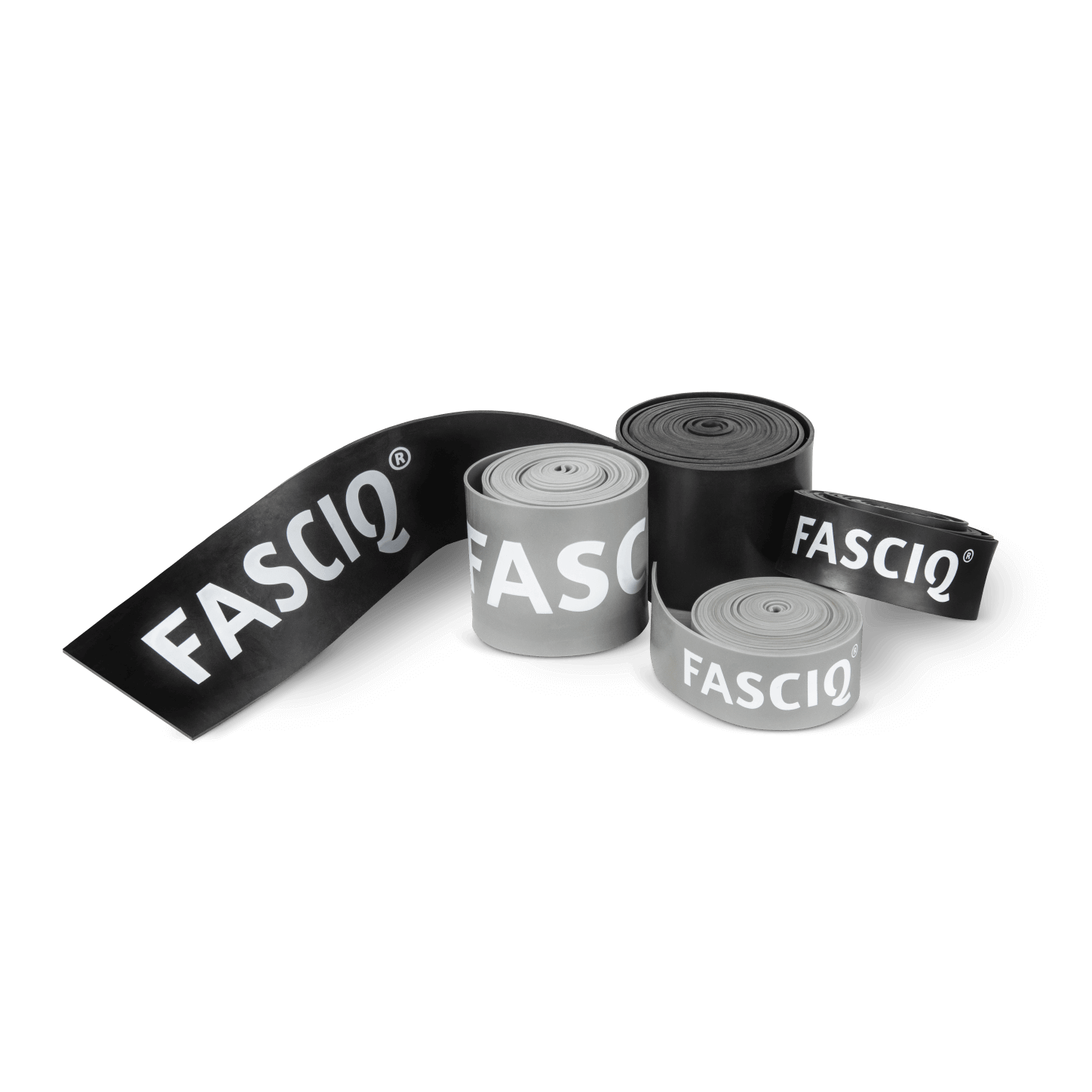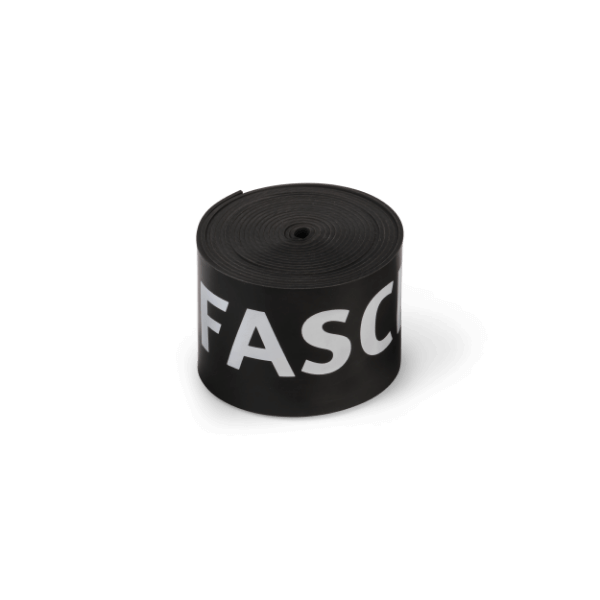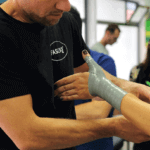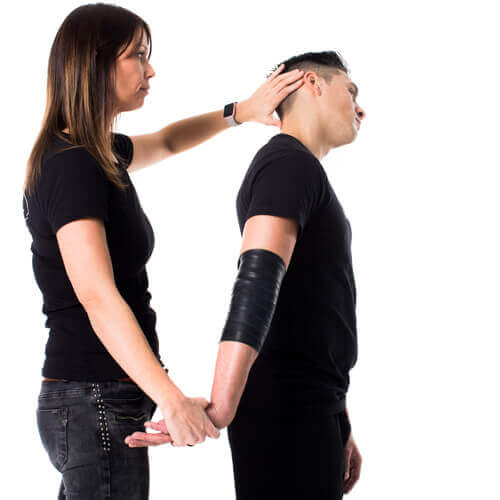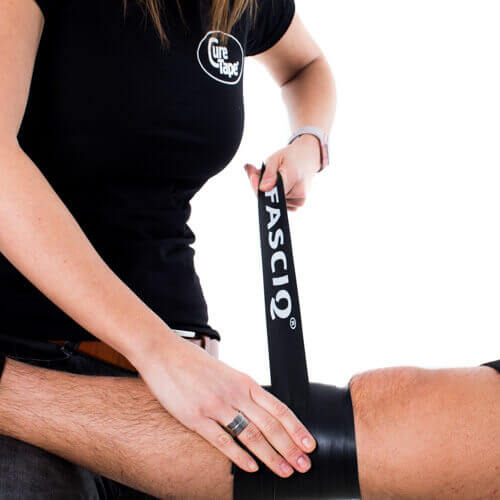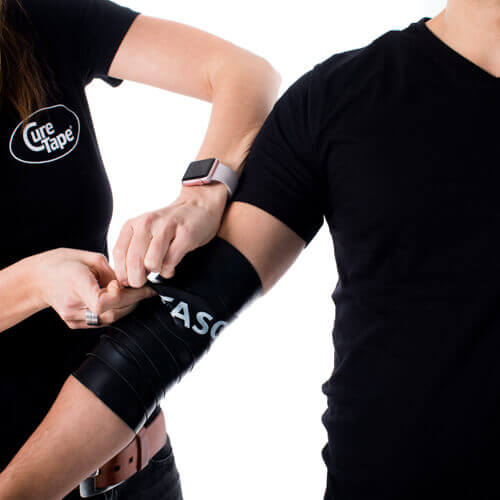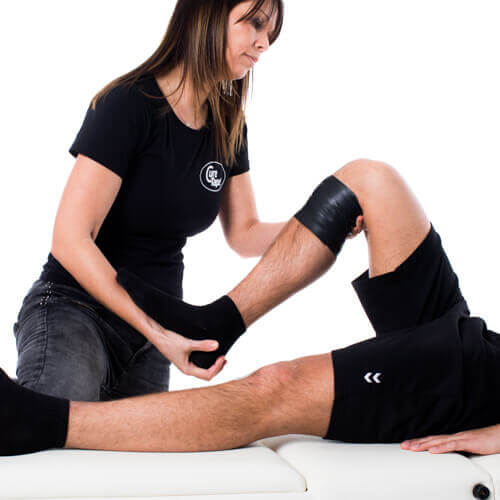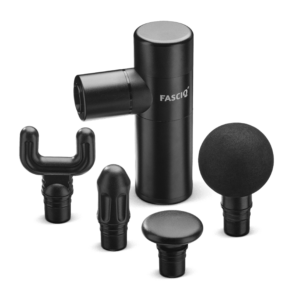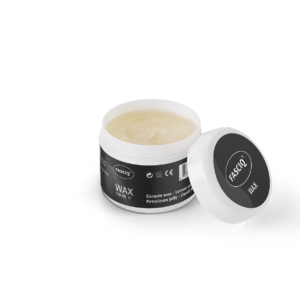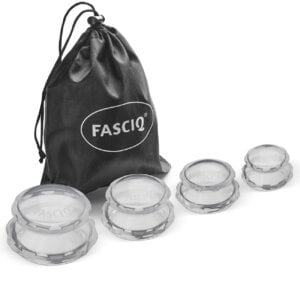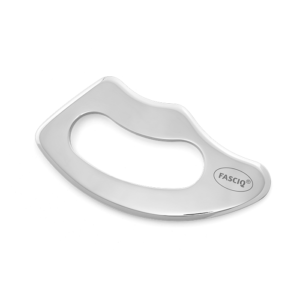Description
Looking for a way to mobilise your muscles, connective tissue or joints? Flossing could be the solution for you! It is a compression-based interval method for the mobilisation of muscles, connective tissue and joints. The use of floss bands also aims at muscle regeneration after training, muscle activation, improved joint mechanics and the elimination of connective tissue adhesions. Flossing offers the possibility of performing complex movements under compression. This can reduce swelling and effusion and restore your freedom of movement.
The flossband is also regularly used in physiotherapy, especially in patients with postoperative and posttraumatic swellings, adhesions and movement restrictions. This method of therapy is based on many positive experiences.
The FASCIQ Floss Bands can be used on shoulders, knees, wrists, elbows, hips, and ankles, providing targeted relief and promoting better movement. However, it’s important to note that it should never be used on the head or neck.
Which floss band should I buy?
- 1 inch: Fingers, wrists or toes
- 2 inches: Any other part of the body, most widely used width
It’s important to consider the thickness of floss bands before making a purchase. Depending on the area of the body you are targeting, you may need a different level of compression. Thicker floss bands, such as those with a thickness of 1.5mm, are ideal for working in difficult areas like the hips or for larger athletes who need more compression. For most individuals, a 1mm floss band will suffice for their needs.
How to use floss bands
Using floss bands effectively involves several steps to optimise their benefits for recovery and mobility. Follow these instructions for proper usage:
- Select the appropriate floss band for the area you intend to treat. Floss bands are versatile tools for therapists, athletes, and fitness enthusiasts.
- Begin by wrapping the floss band tightly around the targeted area, such as a joint or muscle. Start with less pressure at the beginning and end of the wrap, gradually increasing the pressure as you wrap the band around.
- With each wrap, aim to cover approximately 50% of the previous wrap. This ensures that the floss band is evenly distributed around the area being treated.
- Once the floss band is securely in place, keep it on while performing exercises or other movements. This creates compression around the area, which enhances blood flow and supports the healing process.
- After completing the exercises, remove the floss band. Begin actively or passively moving the affected area to stimulate blood flow and improve circulation.
- It is recommended to repeat this process a few times to achieve optimal results. However, always listen to your body and adjust the pressure as needed.
- If the pressure from the floss band becomes too intense or causes pain, remove it immediately and consult with a medical professional for guidance.
By following these steps and using floss bands correctly, you can experience improved mobility, reduced pain, and enhanced recovery after exercise.
Floss bands benefits
- Rapid displacement and drainage of fluid after trauma.
- Improved range of motion in joints.
- Reduced muscle tension.
- Faster recovery of injuries
- Pain reduction.
- Lymphatic drainage.
- Improved tissue perfusion.
- Ensures a flexible and healthy fascial network and restores balance in the body.
How floss bands affect the fascial system
One possible explanation for the positive results of flossing can be found in the function of the fascial system. The bands reduce myofascial adhesions and have an effect on the neural bioregulation system which is controlled by connective tissue and transfers information to and from the brain. Flossing therapy has not yet been scientifically proven, but the positive reactions from athletes and physiotherapists make the flossband exercises worth a try.
The use of flossbands on animals
Flossbands are not only useful for human athletes but also for animals. Many veterinary professionals use flossbands on animals to help treat a variety of injuries and conditions. Flossbands can be wrapped around joints, muscles, and other areas of the animal’s body to help improve mobility, decrease pain, and increase circulation. Flossbands are commonly used on horses, dogs, and other performance animals. They are a great tool for animal owners and trainers to have on hand for preventative and therapeutic care. However, it is important to consult with a veterinary professional before using flossbands on animals to ensure that the technique is being used safely and effectively.
Mobility Floss Bands product video
FAQ Floss Bands
Flossing has its origins in professional sport. More and more therapists are now using floss bands to treat various injuries. During the floss band exercises, when the floss band is applied to an area to be treated, the tissue is tied off. All flow is interrupted in that area and tremendous pressure is applied to the treatment area. While the flossband is around the treatment area, you move the joint to loosen the adhesions and connections that restrict movement down to the deepest layers of skin. Please note that the use of floss band is only recommended by or after specific advice from professionals.
Absolute forms of contraindications are:
- Thrombosis
- Tumours
- Latex allergy
- High dose of corticosteroids
- Blood thinners\Fractures
- Heart failure
Relative forms of contraindications are:
- Fever
- Varicose veins
- Thyroid dysfunction
- Open wounds and/or skin lesions
- Pregnancy
- Mental stress
- Chronic inflammatory process (RA)
- Improved range of motion in joints
- Lymphatic drainage
- Improved tissue perfusion
- Fast relocation and disposal of moisture after a trauma
- Reduced muscle tension
- Faster recovery of complaints
- Ensures a flexible and healthy fascial network and restores balance in the body
- Pain reduction
Absolutely! Latex allergy is an absolute contraindication for the use of flossband therapy.
For all other contraindications, please refer to the question ‘What are contraindications for Floss Band therapy?
With proper use and maintenance, the floss bands will last for years without any problems. It is important, for example, not to leave them in the sun.
The Floss Bands can easily be cleaned with some soap and warm water.


